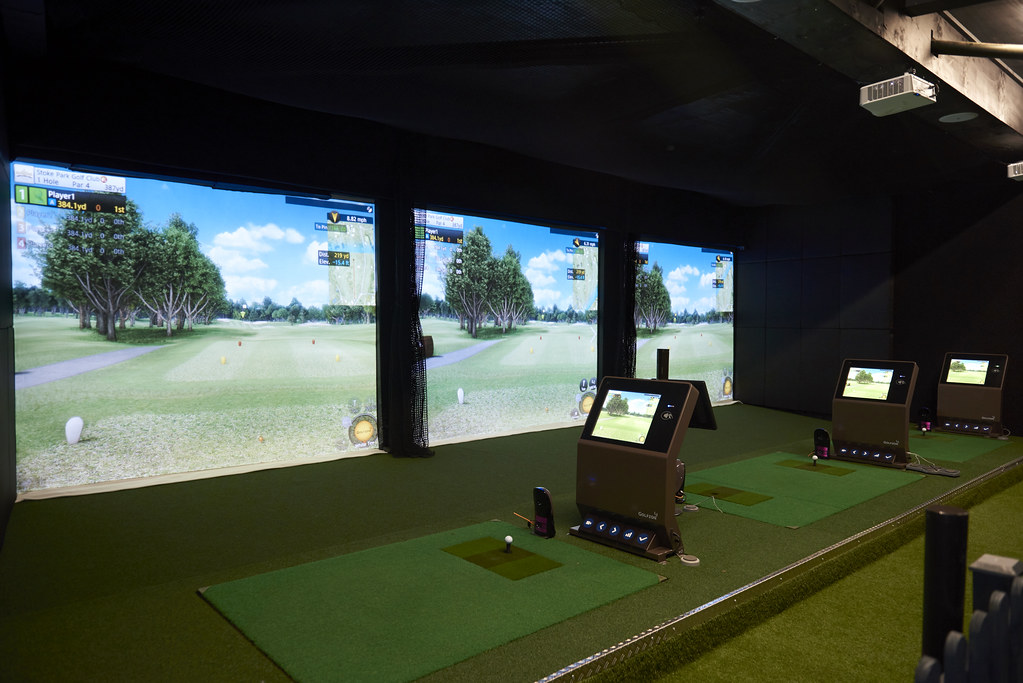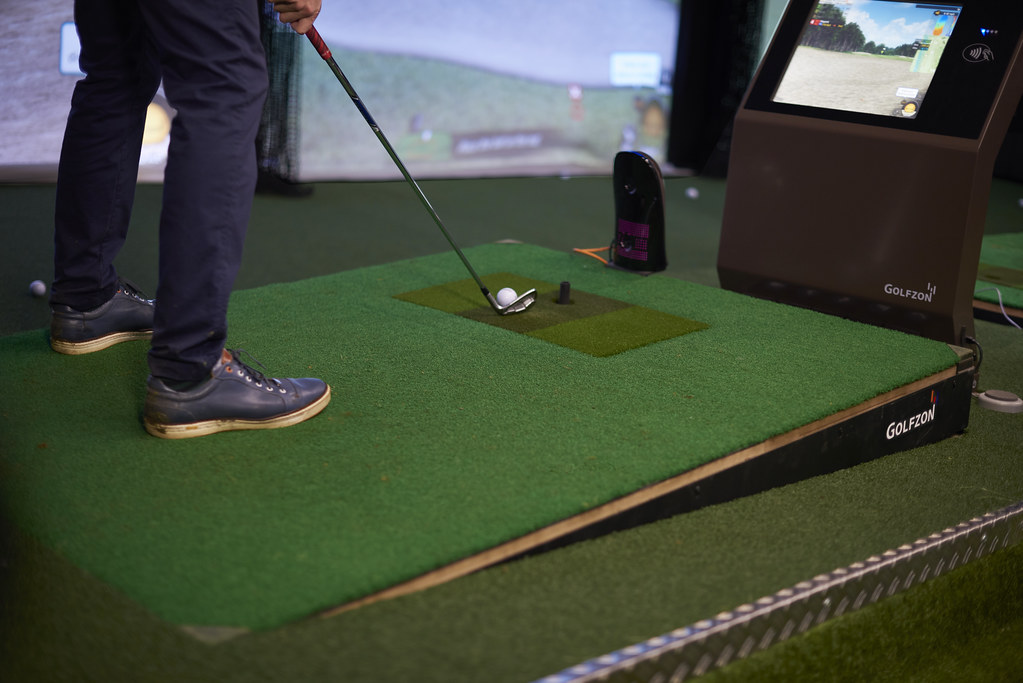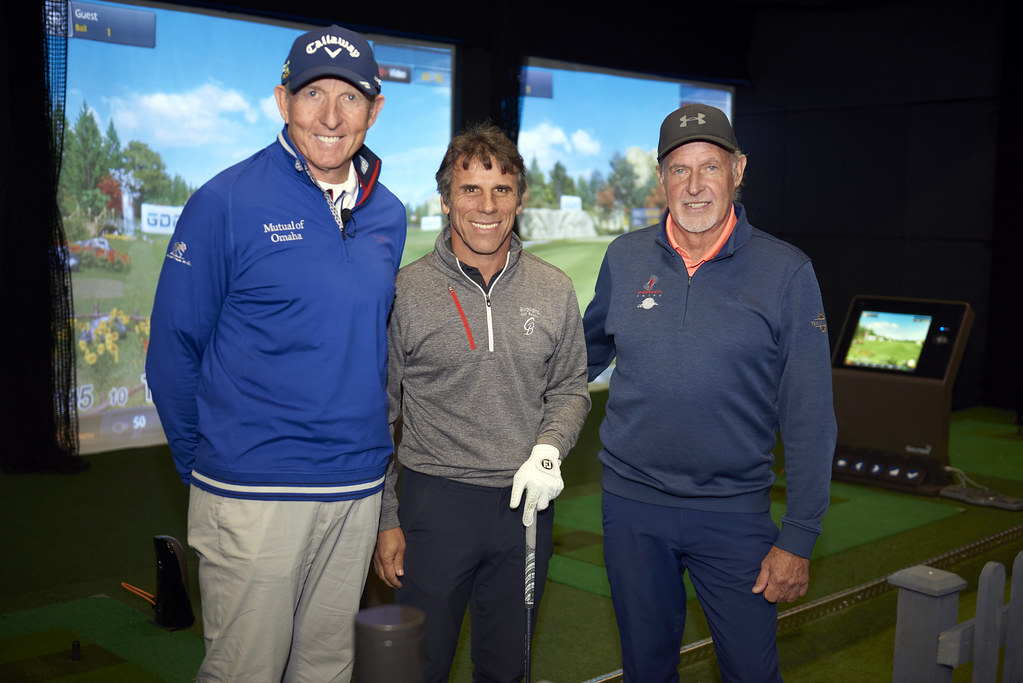For the traditional golf aficionado, the closest one might get to indoor golf is a sheltered bay at the driving range.
It may even offer a welcome semblance of warmth, hidden from the elements as you grind.
In November, ‘tis sadly the season of soggy courses and biting weather, with fingertips across the globe dreading thinned irons.
Even amongst the most dedicated of golfers, there is a natural resistance to wage war on the winter battlefield, slogging through the marsh for four and a half hours, only to loosely threaten the 30-point Stableford mark.
In South Korea, however, these concerns are few and far between.
Here, more rounds of golf are completed indoors than outdoors, and the phenomenon that is ‘screen golf’ is the reason why.
Golfzon, operator of the state-of-the-art simulators on which screen golf punters play, offer almost 6,000 indoor locations in the country – a novel approach to tackling the extortionate costs and far flung loci of the traditional ‘field golf’ courses.
Via the simulator, a single golfer can complete a round of 18 holes on one of the most famous courses in the world in an hour – and it will only cost them £20.
One of golf’s most problematic elements is the time it takes to complete a round. Screen golf not only dispels this obstacle for new players, but also naturally tackles the uncertainty of adverse weather conditions.
What is more, it is inherently a more sociable game, nullifying the fairway departures instigated by a playing group’s eclectic mix of hooks and slices.
Such is the popularity of screen golf in South Korea, that Golfzon offers the GTour and WGTour – 10 tournament series for men and women respectively – and broadcasts them live on a dedicated 24-hour cable channel.
An equal season purse of $1.3 million was offered in 2018 for both tours, with several seasoned professionals splitting time between field golf events and their screen golf counterparts.
There is certainly scope for performing well across the two formats. Take Hong taek-Kim, winner on both the simulated GTour and the regular Korean PGA Tour in 2017.
Equally, golfers need not have mastered the field game in order to succeed on the simulators. South Africa’s Kyle Martin, a 7-handicapper, is a scratch level golfer in screen golf, as he takes advantage of the premium placed on consistent ball striking.
The GTour and WGTour may seem a surreal notion, with stands constructed around the indoor simulators to provide an engaged crowd and tournament atmosphere.

However, screen golf is revamping the game’s accessibility, and its affinity with virtual reality gaming is particularly enticing for youngsters seeking to give golf a try.
David Leadbetter, regarded by many as the world’s premier golf instructor, has overseen the introduction of three Golfzon simulators to the Leadbetter Golf Academy European HQ at Stoke Park in Buckinghamshire.
For him, the simulators help marry golf and gaming, creating a concoction that will draw in more juniors and keep youngsters playing longer.
He tells us: “I think in this day and age it’s all about trying to keep young players occupied in a way that’s immersive and entertaining.
“This is a sort of golf video game if you will, which probably gets their juices flowing a little bit more – it’s a lot more interesting than standing on the range and whacking golf balls, where the juniors are asking themselves, what am I getting out of this?”
Kudo Yukino, a 10-year-old girl, is currently competing against men in screen golf. Her success is indicative of the format’s accessibility.
As well as providing another outlet for juniors to compete, Leadbetter believes that the simulator’s technology affords coaches the luxury to introduce technical advice in a more entertaining package.
“When you go to Korea and you see the number of youngsters in there practicing and working on their games it’s incredible”, he says.
“Coaches can almost sneak the technique aspect in while they are actually playing games and competing in challenges too, so there’s an intriguing performance-based aspect attached to it.”
With Golfzon making more of a splash in the Western market, just how far can the tech improve your golf game out on the course?
There are certainly some wonderful features, most notably Golfzon’s moving Swing Plate – a high-tech tee mat which automatically adjusts to uphill, downhill, and side-hill lies, based on the contours of each individual playable course.

Equally, the fact that you are hitting off a mat is, of course, not the same as being out on the turf, where rough, divots and course conditions can detrimentally impact the player’s lie. There are also limitations to replicating the short game. Outside, you naturally create a feel for distance through your eyes looking at the hole, whereas the sim encourages a numbers-based approach to your work around the green.
From a coaching standpoint, Leadbetter puts the role and potential of the simulators into perspective.
“The overriding thing here is that there is still a consequence, there’s still a target – and the results are pretty realistic”, he says.
“Ultimately, it’s not too big a gap to go from the simulator out on to the golf course. This time of year is great if you can spend time on the simulator and keep your game in good shape – when the spring does come around, the weather gets better and the sun warms up you can get out there and play better golf quicker.”
The Golfzon experience has already attracted some high-profile fans as the screen golf phenomenon gains traction outside of its South Korean HQ.
Gianfranco Zola, former Napoli, Parma and Chelsea footballer, is a 5-handicap golfer and one such enthusiast.
In his current capacity as a coach, he is a big proponent of the use of technology for his player analysis, and by the same token, he sees the simulators as a wonderful tool for golf improvement.
“I think the Golfzon simulators within the Leadbetter Academy are fantastic”, he says.

“You have that instant data in front of you which can only help you improve. As a manager, I am often trying to explain to a player that they should be doing something differently – to run somewhere else, to be faster in certain parts of the pitch or how they should be doing more for the team.
“I love my golf. It is a more technical sport than football but you still need that little bit of imagination and creativity sometimes and there are some similarities I hadn’t thought about before.”
In South Korea, the Golfzon simulators are not only crucial from a game-improvement standpoint, but they also encourage a more sociable approach to the game.
Indeed, Golfzon suites work as a private booth, capable of hosting groups as an entertainment package in a similar vein to that of TopGolf, which is already a popular activity in the UK. Right now, the Western market is somewhat untapped – with the instalment of simulators limited in the main to private homes. But it is not a reach to envisage an hour long, 18-hole knock around St Andrews – all from the comfort of a glorified living room – gaining corporate popularity.
For those unfamiliar with professional screen golf, I won’t blame you for perceiving it as a gimmick. Besides, clubhouse stories are far more engaging when you conjure up a bit of magic left-handed, behind a bush whilst caked in mud.
However, there is much to be said for its role in attracting new players – particularly youngsters – to a game that is chronically time consuming and difficult to grasp technically.
By way of eliminating golf’s traditional obstacles, screen golf is increasingly well-suited as a method of play for the developing golfer.
So in the depths of winter, when a cold, harsh slog in the mud doesn’t quite whet the appetite, consider the folks in South Korea embracing the game – at room temperature.
Images courtesy of Azalea
